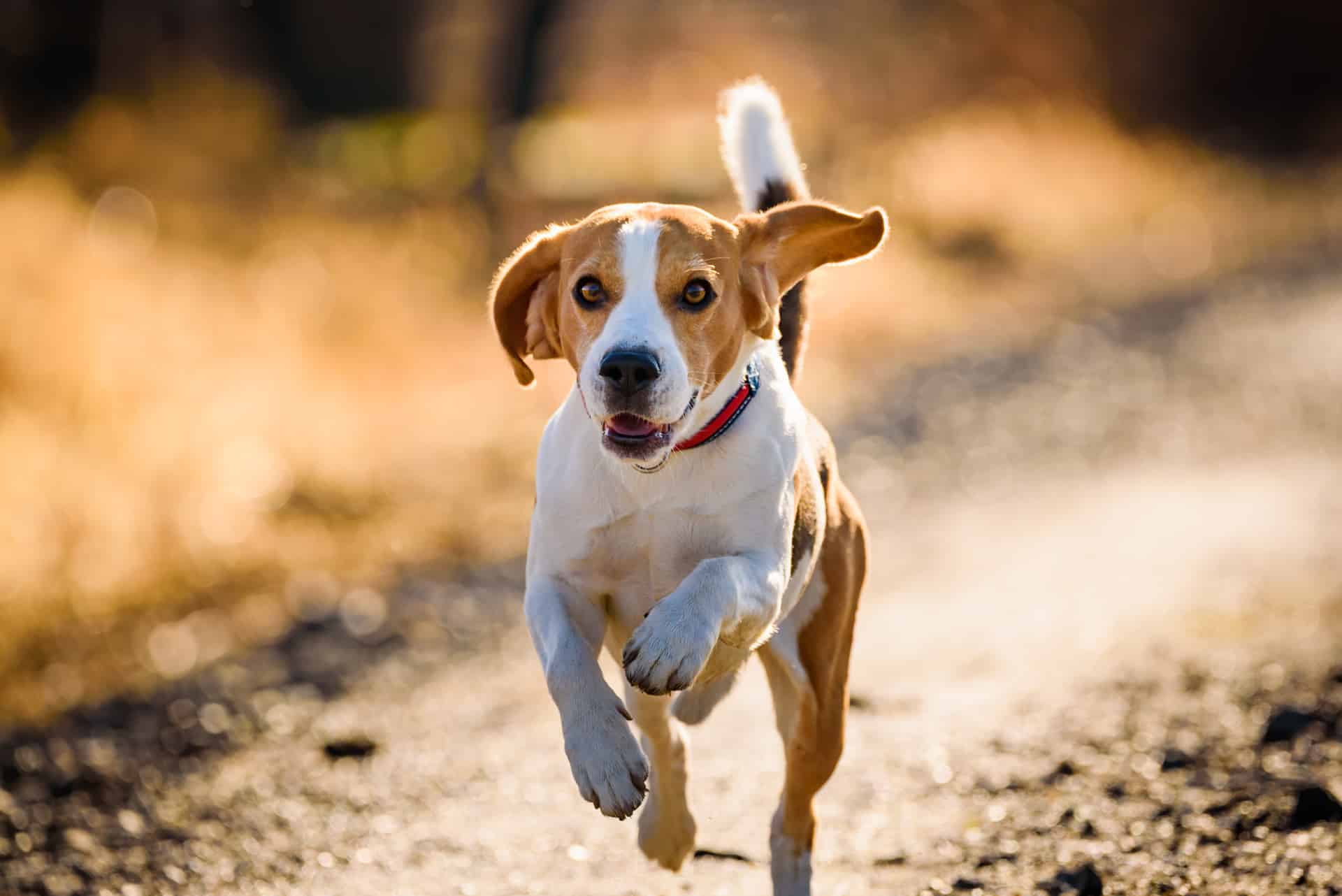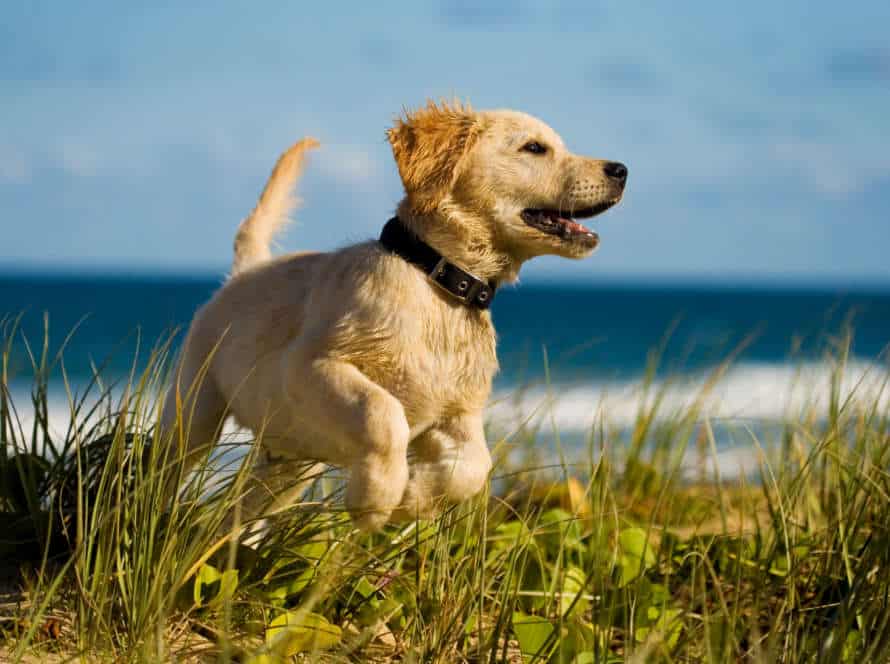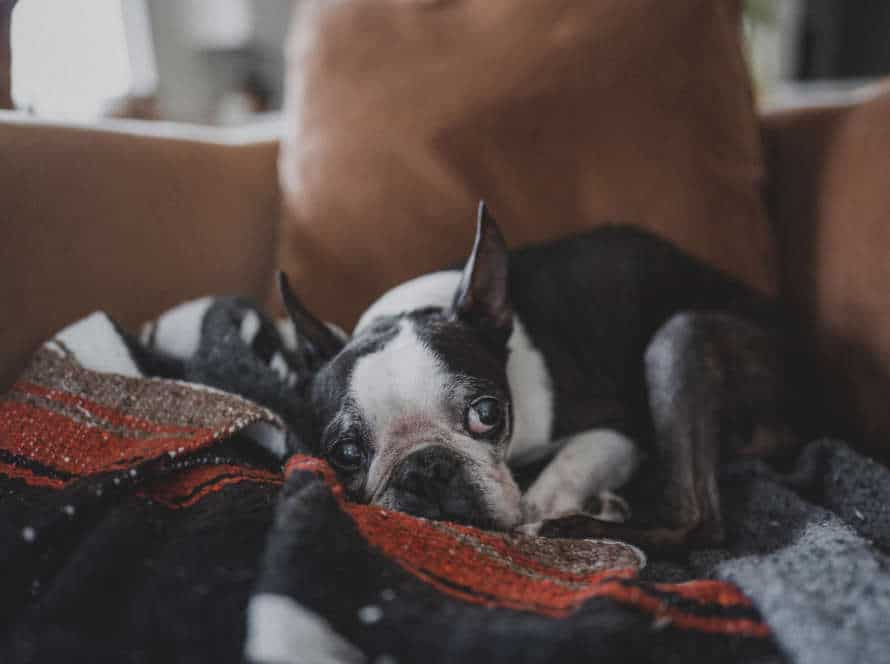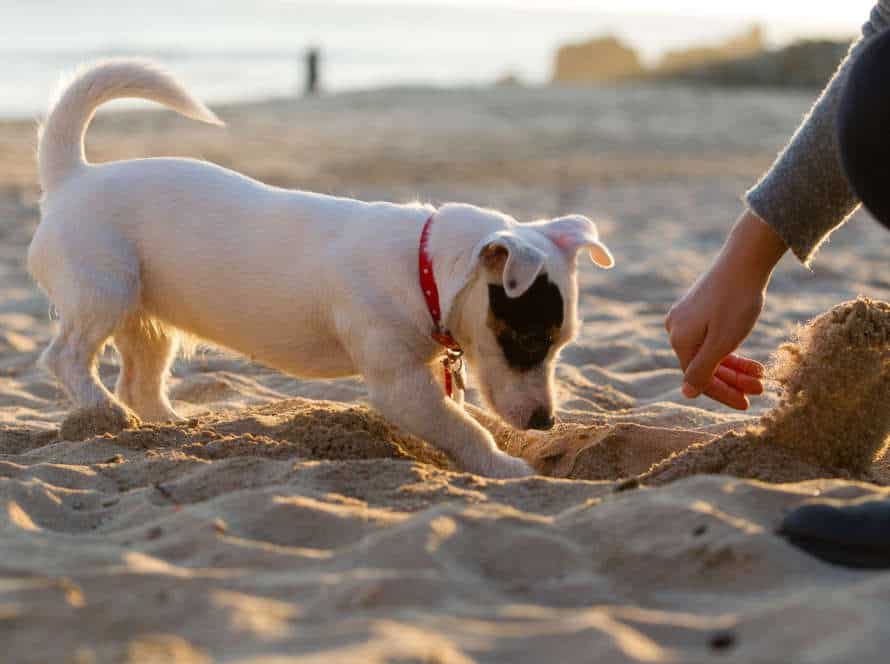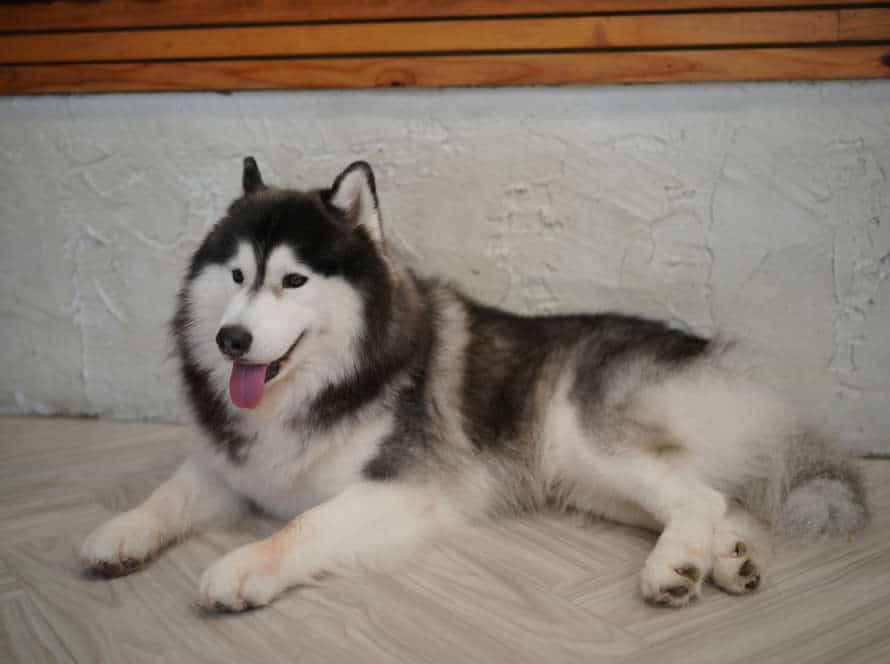The Role of Breed and Size in Your Dog’s Jumping Behavior
The breed and size of your pup can have a large influence on their jumping. Smaller breeds, with their lighter weight and more muscular mass, are usually better jumpers than their larger counterparts. Furthermore, certain herding breeds, like border collies or Australian shepherds, have a natural inclination to jump, which can lead to excessive jumping if not trained properly. Bigger breeds, such as Great Danes and Mastiffs, are less agile and may experience joint issues that will affect their jumping abilities.
It is crucial to be aware of your pooch’s tendencies and personality to better comprehend their jumping behavior. By offering proper training, socializing, and enrolling in obedience classes, you can correct any incorrect jumping behavior and make sure your pup remains obedient. Pro Tip: Providing adequate exercise and playtime can reduce excess energy, decreasing the likelihood of them jumping on people and objects.
Understanding Jumping Behavior in Dogs
It is widely known that dog breeds and sizes lead to different jumping behaviors. What are the factors behind this? To comprehend this better, we must look at how breed and size play a role. This article will investigate the impact of breed, size, and other elements that influence a dog’s jumping behavior.
Why do dogs jump?
Dogs jump for different reasons. It depends on the breed, size and personality. It can be playful or serious, like aggression or anxiety.
Smaller breeds, like Chihuahuas and Dachshunds, usually jump for attention. Bigger dogs, such as Great Danes or German Shepherds may jump due to dominance or playfulness.
Learn your doggy’s jumping habits by considering their breed and size. If the jumping is causing problems or aggression, you may need to get professional help. For the most part, jumping is natural, but it can be controlled with proper training and positive reinforcement.
Always keep in mind: be patient and consistent when addressing the jumping behavior.
How dogs learn to jump?
Dogs learn to jump from a young age. Their ability to jump depends on their breed and size. Knowing what affects your pup’s jumping can help you train them better and keep them safe.
Small breeds like Chihuahuas usually jump higher because of their size and agility. But, larger breeds like Great Danes may not be able to jump as high because of their weight and size.
Training and environment also affects a pup’s jumping behavior. With consistent training and positive reinforcement, your pup can learn to jump on command and stay away from jumping when it’s not suitable.
As a responsible dog owner, you should know your pup’s jumping behavior and take steps to protect them. For example, use ramps or stairs to avoid injuries from jumping from high surfaces.
Pro Tip: If you have a pup or a dog that loves to jump, set up a safe place for them to practice their jumping skills. A backyard agility course or a jump station with adjustable heights is a good option!
Common jumping behaviors in dogs
Jumping is common behaviour in dogs. Knowing why they do it helps you train them to act properly. The breed and size of your dog can have a major effect on their jumping. Here are some common reasons:
- Excitement – For some pooches, it’s a way to show enthusiasm and greet owners or strangers.
- Attention-seeking – They might jump to get attention or love from their owners or to ask for food or playtime.
- Anxiety – If they’re anxious or upset, like when there’s a storm or new people, they might jump.
- Breed & Size – Certain breeds, like retrievers and border collies, are famous for their jumping. Smaller dogs may jump to make up for their size.
Knowing the reason behind their jumping helps you tackle it in a positive way, like with training or exercise.
Pro Tip: Get your dog to sit or stay instead of jumping. This will change their behaviour and reward good habits.
How Breed Impacts Jumping Behavior
Breed and size both play a huge role in understanding your dog’s behavior. Pointers and retrievers were bred to have strong hind legs and jumping power. On the other hand, Chihuahuas and other smaller breeds are not as capable of jumping due to their size. Let’s discover how breed and size affect your pup’s leaping behavior.
Breeds with high jumping instincts
Certain breeds of dogs have an innate capacity to jump higher than others. This is due to their body type, athleticism, and personality. Here are some dog breeds popular for high jumping:
- Border Collies: Athletic and smart, they are great jumpers. Needing lots of exercise and mental stimulation.
- Greyhounds: Bred for speed and agility; they are able to jump high, with long and lean bodies and strong hind legs.
- Salukis: Stamina, speed, and agility. Jump up to 6 feet high. They excel in lure coursing and agility competitions.
- Australian Shepherds: Highly intelligent, active, and natural jumpers. Often used in flyball, obedience, and agility competitions.
Yet, it’s important to remember that breed isn’t the only factor. Size, age, health, and training all play a part.
Breeds with low jumping abilities
Dogs’ jumping ability is diverse, caused by various things such as their size, muscles, health, and age. There are certain breeds appropriate for those with small kids, living in apartments, or who don’t desire their pup to jump on them.
These breeds have low jumping capacity:
- Bulldog – Gentle and loving, they are too short to jump much.
- Basset Hound – Low to the ground and with short legs, they can’t jump high.
- Pug – Small and with short legs, they can’t jump high either.
- Dachshund – Their long bodies and short legs won’t let them jump high.
- Boston Terrier – A small breed, they cannot jump too high due to their size and build.
Crossbreeds and jumping behavior
The breed of a pup has a great influence on its jumping behavior. Crossbreeds may show a different kind of jumping compared to purebreds, depending on their mix.
For example, small breeds like Chihuahuas tend to jump on furniture or people as a sign of affection or when they feel protective. On the other hand, big breeds like Great Danes often jump from playfulness or to get attention. Some breeds, like Border Collies, are natural jumpers and may show more leaping activity even without climbing onto tables or counters.
Size, regardless of breed, is important too. Smaller dogs are likely to jump more than bigger breeds, since they can reach higher spots with ease. Bigger breeds like the Great Dane may not jump on furniture often, as they’re heavy and large.
Understanding what breed and size traits affect jumping behavior can help you train your pup better and stop unwanted jumping. Pro tip: Teaching your pup commands like “down” and “off” can help discourage jumping.
How Size Impacts Jumping Behavior
Size is the main factor in deciding how high and how far your pup jumps. A small dog can’t jump as high as a bigger one, but if the bigger dog isn’t trained well, it could hurt itself by jumping too high. Let’s discover how size affects your pup’s jumping behavior.
Small dogs and jumping
Small dogs are known for jumping higher than larger breeds. This is due to their energetic nature and small body size. Breed type and size influence a pup’s jumping habits. Smaller breeds tend to jump more and higher.
Factors such as breed genetics, age, energy level, and training can affect jumping behavior. Chihuahuas, Pomeranians, and Jack Russell Terriers have higher energy levels and are more likely to jump.
To reduce jumping in small dogs, manage their energy levels. Give them physical and mental stimulation. Training exercises like the ‘wait’ and ‘stay’ command can be helpful.
Pro tip: Use positive reinforcement when training your small dog. Reward them for good behavior instead of punishing them for jumping.
Large dogs and jumping
Large dogs can jump higher and with more force than smaller ones. It’s important for owners to understand the effect of breed and size on jumping behavior. All dogs have the capacity to jump, but larger breeds like Great Danes and German Shepherds have stronger hind legs. This lets them jump high and far.
It’s essential to train your dog and give them activities and toys to channel their energy. Jumping too much can be bad for their health and lead to injuries. As an owner, you should know your dog’s tendencies and adjust your lifestyle and training so they stay healthy and happy.
Toy dogs and jumping
Size matters when it comes to a dog’s jumping behavior. Toy dogs, like Chihuahuas and Pomeranians, tend to jump more than bigger dogs like German Shepherds and Great Danes. However, breed and temperament also play a role.
It’s important to understand your pup’s jumping tendencies and provide proper training and stimulation. Pro Tip: Give your toy dog plenty of toys and playtime. Plus, get them ramps or stairs to avoid injuries from jumping onto furniture.
Controlling Jumping Behavior
Jumping in dogs is influenced by the breed and size. Small breeds may be more jumpy than bigger ones as they have a lower center of gravity and are more agile. Knowing your pup’s breed and size can help you curb jumping behavior. Here are some tips based on breed and size to help you manage it:
Positive reinforcement training
Positive reinforcement training is a successful way to control jumping in dogs. It doesn’t matter their breed or size. This technique is about rewarding good behavior and ignoring bad behavior. To do this:
- Teach your dog a command like “off” or “down”. This tells them that jumping on people is wrong.
- Give treats or praise when they obey the command.
- Don’t use physical punishment. It can increase their anxiety and aggression.
- Be consistent. Praise and reward your pup for good behavior. Ignore the bad.
- Make the positive behavior a habit.
- Tip: It takes patience. Don’t get discouraged. Keep working the training for desired results.
Physical training aids
Physical training aids can help control a dog’s jumping. But, breed & size also matter. Here are some useful training aids:
- Baby gates: Keep your pup confined to an area & limit their access to certain parts of the house.
- Leash: Use a short & firm leash to control their movements & stop them from jumping on people.
- Treats: Reward them for good behaviour & reinforce commands like ‘sit’ & ‘stay’.
Breed & size do affect jumping. Bigger pups like Great Danes or Pit Bulls tend to jump more. Whereas, small breeds like Chihuahuas are more territorial & defensive. So, training & discipline techniques should be applied according to the pup’s size & breed.
Management techniques
Jumping is natural for dogs. But, too much jumping can be a problem. You can manage this behavior by using several methods.
- Training: Teach your pup what jumping is allowed and what isn’t.
- Exercise: Give your pooch regular exercise to tire them out and reduce jumping.
- Management: You can use things like baby gates or closed doors to limit where they can jump.
- Breed & Size: Smaller dogs may jump more, while larger breeds might jump to show dominance.
By using these methods and considering your dog’s breed & size, you can control their jumping behavior.
Common Jumping Problems and Solutions
Jumping up? A common issue for all dog owners! It can be truly annoying and hard to understand why your pup is doing it. Different breeds and sizes of dogs have different reasons for jumping and, naturally, different solutions too. Let’s look at some common jumping problems and their solutions.
Jumping on people
Jumping on people is a behavior issue in dogs. It can be solved with the right training and consistency.
Here are some answers, dependent on the dog’s breed and size:
- Teach ‘sit’ and ‘stay’. Follow these commands consistently, give rewards for obeying.
- When the dog jumps, turn away and ignore them until they calm down. Give rewards when normal behavior returns.
- Avoid giving encouragement for the jumping.
The breed and size of the dog can also affect the jumping. Smaller dogs may jump more looking for attention, while bigger ones may be doing it out of excitement. Training and consistency can help all breeds and sizes of dogs.
Jumping over fences
Jumping fences can be a problem for many dog owners. It is important to figure out why they are jumping and take steps to stop it. Here are some common reasons and solutions:
- Overexcitement: Dogs may jump when they are excited. To reduce this, ignore the jumping and only reward when they are calm.
- Separation Anxiety: Dogs jump to be closer to their owners. Provide a safe and secure environment.
- Breed and Size: Some breeds are more likely to jump due to their size and athleticism. Exercise and engage them in stimulating activities.
- Proper Training: Teach them commands like sitting, staying, and not jumping.
Understand your dog’s jumping behavior and provide a safe and comfortable environment.
Jumping on furniture and other objects
Jumping on furniture and other objects is a typical behavior issue. It can be a threat to your pooch and your home. The frequency and height of your pup’s jumping can be affected by their breed, size, and environment. Here are some common issues and solutions based on breed and size:
Small Breeds: Small dogs are more likely to jump on furniture due to their size and ability. Give your small dog a ramp or stairs to climb onto furniture safely. Also, put a soft dog bed near your furniture for your pup to use.
Medium Breeds: Medium-sized dogs are better jumpers and can access furniture and other objects. Train your medium-sized pup to jump on command or teach them to wait for permission first. Give them plenty of indoor and outdoor activities to reduce their jumping.
Large Breeds: Large breeds are the most difficult when it comes to jumping. Their size can cause harm to your home if they misjudge a jump or lose balance. Train your large dog to jump on command or use body language to show when a jump is allowed. Provide alternative ways to release energy, such as long walks or outdoor playtime.
Ultimately, managing jumping behavior requires training, supervision, and stimulation for your pup to live safely and comfortably in your home.
Conclusion: Understanding and Managing Your Dog’s Jumping Behavior
To wrap up, understanding and managing your pup’s jumping is essential for a safe and obedient pet.
The breed and size of your dog both impact their jumping due to their instincts.
Whether your canine jumps from excitement or aggression, take measures to control it and keep everyone safe.
Consistent training, redirecting attention, exercise and mental stimulation, and professional help are some useful tips for managing their jumping.
With patience, effort and proper training, you can teach your furry pal to greet people without jumping up on them.
Frequently Asked Questions
1. Does breed play a role in my dog’s jumping behavior?
Yes, breed can play a significant role in your dog’s jumping behavior. Certain breeds, such as the Border Collie or the Labrador Retriever, are known to be natural jumpers and may display advanced jumping abilities.
2. Can the size of my dog affect their jumping ability?
Yes, the size of your dog can affect their jumping ability. Smaller dogs tend to have less power in their legs and may not be able to jump as high or as far as larger dogs.
3. How does proper training help with jumping behavior?
Proper training can help your dog develop proper jumping techniques, increase their strength and stamina, and reduce the risk of injury. Consistent training can also help address jumping behavior issues such as jumping on people and furniture.
4. Can jumping behavior be an indication of underlying health problems?
Yes, excessive jumping behavior or difficulty with jumping can be an indication of underlying health problems such as joint pain or arthritis. It is essential to consult with a veterinarian if you notice any changes in your dog’s jumping behavior.
5. What prevents a dog from jumping over a fence or gate?
Different types of fencing and barriers may deter dogs from jumping over. For example, a taller fence, with smooth or angled tops, may discourage a dog from attempting to jump over. Training your dog to respect the boundaries of the fence or gate is also vital in preventing jumping behavior.
6. How can I teach my dog to jump safely and effectively?
The best way to teach your dog to jump safely and effectively is through consistent training, positive reinforcement, and starting with low obstacles. It is also essential to ensure your dog’s health and physical readiness before beginning any jumping training.

